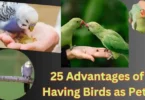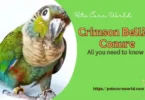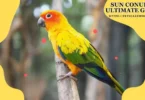Birds have fascinated humanity for centuries with their beauty, songs, and remarkable behaviors. One common question that often piques our curiosity is, “How long do birds live?” The lifespans of birds can vary dramatically based on factors such as species, habitat, diet, and predation. This article will explore how long different types of birds live and what affects their lifespan.
How long do birds live?
Birds come in an incredible array of shapes, sizes, and colors, each adapted to their unique ecological niche. Consequently, bird lifespans can differ significantly. From the tiny hummingbird to the majestic eagle, let’s explore the diverse lifespans of these fascinating creatures.
Avian Lifespans
- Short-Lived Songbirds: Small songbirds like the wren and the warbler, while delicate and delightful, tend to have relatively short lifespans. These birds typically live around 2 to 3 years in the wild.
- Moderate Lifespans: Many common backyard birds fall into this category. Birds such as sparrows, robins, and finches usually live between 5 to 10 years, depending on factors like food availability and predation risks.
- Long-Lived Parrots: Parrots are renowned for their intelligence and vibrant plumage. Some parrot species, like the Macaw, have impressively long lifespans, often exceeding 50 years. Proper care and attention contribute to their longevity.
- Eagle’s Longevity: Eagles, as apex predators, tend to enjoy extended lifespans. Species like the Bald Eagle can live up to 30 years or more, benefiting from their status at the top of the food chain.
- Seabirds’ Endurance: Seabirds, such as albatrosses and petrels, have evolved for life on the open ocean. These birds can survive for several decades, with the Wandering Albatross holding the record for the longest wingspan and a potential lifespan of over 60 years.
Factors Influencing Bird Lifespans
A bird’s lifespan is influenced by various factors that shape its environment and experience. Here are some key elements that impact how long birds live:
- Habitat: The type of habitat a bird inhabits can significantly affect its lifespan. Birds living in urban environments might face different challenges than those in pristine forests.
- Predation: Predators play a crucial role in determining bird lifespans. Birds at higher trophic levels, like raptors, tend to live longer due to their reduced risk of predation.
- Diet: Nutrition is vital for avian health. Birds with access to a varied and abundant diet are more likely to live longer than those struggling to find food.
- Migration: Birds that undertake long migrations face increased risks and challenges. Successfully navigating these journeys can impact their overall lifespan.
- Climate: Extreme weather conditions can impact bird populations and their lifespans. Adaptations to climate change are essential for survival.
Lifespans of Common Birds
- Sparrows: 3-5 years
- Robins: 2 years (often less due to high mortality rates among young birds)
- Blackbirds: 2-3 years
- Pigeons (Rock Doves): 3-5 years (in the wild, but can live longer in captivity)
- Starlings: 2-3 years
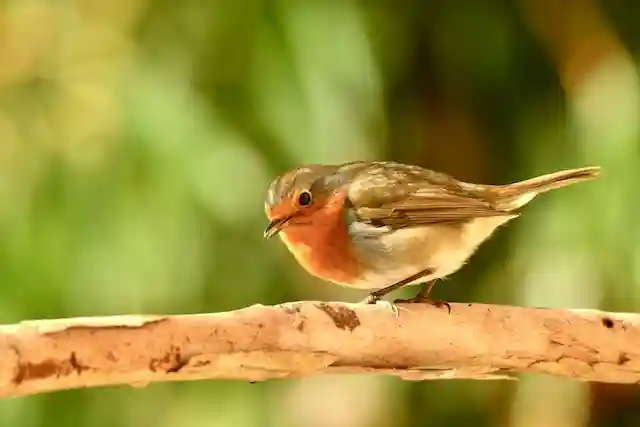
Oldest Bird Alive Today: The Laysan Albatross named “Wisdom” held the record for being one of the oldest known birds in the wild. Wisdom was banded* as an adult in 1956 and was estimated to be at least 70 years old.
*Banded
“Banded” refers to the process of placing a small, lightweight metal or plastic ring around a bird’s leg.
30 lesser-known Fun Facts Lifespan of Birds
- The Wandering Albatross holds the record for the longest lifespan among birds, with some individuals living up to 70 years.
- The African Grey Parrot, known for its exceptional intelligence, has a lifespan of around 50-60 years in captivity.
- The tiny hummingbird, despite its size, can live up to 12 years in the wild.
- The Kakapo, a flightless parrot native to New Zealand, has a lifespan of roughly 60 years.
- The average lifespan of a Bald Eagle is approximately 20 years in the wild.
- The Andean Condor, one of the largest flying birds, can live up to 70 years in captivity.
- The domesticated chicken has a lifespan of around 5-10 years, depending on the breed.
- The ostrich, the largest living bird, has a lifespan of 40-50 years.
- The alpine swift holds the record for the longest continuous flight among birds, but its lifespan is relatively short, typically around 7 years.
- The African Penguin can live up to 15-20 years in the wild.
- The American Crow has an average lifespan of 6-8 years.
- The budgerigar, or commonly known as a budgie, can live up to 5-10 years.
- The colorful Macaw species have an average lifespan of 30-50 years in the wild.
- The Robin, often associated with spring, has a lifespan of around 2 years in the wild.
- The majestic Great Blue Heron has an average lifespan of 15 years.
- The Raven, known for its intelligence, can live up to 25 years in the wild.
- The elegant swan has a lifespan of 20-30 years.
- The graceful Flamingo can live up to 20-30 years.
- The Common Loon has a lifespan of 25-30 years.
- The colorful Gouldian Finch, native to Australia, can live up to 5-8 years.
- The White-throated Sparrow has an average lifespan of 2-3 years.
- The agile Peregrine Falcon has a lifespan of 8-15 years.
- The European Starling has a relatively short lifespan of 2-3 years.
- The magnificent Snowy Owl can live up to 10 years in the wild.
- The Kookaburra, famous for its distinctive laughing call, has a lifespan of 15-20 years.
- The Peacock, known for its dazzling plumage, has a lifespan of around 15 years.
- The adorable Penguin species, such as the Emperor Penguin, can live up to 15-20 years in the wild.
- The passionate Scarlet Macaw can live up to 40-50 years.
- The tiny Chickadee has an average lifespan of 2-3 years.
- The charismatic Toucan has a lifespan of 15-20 years.
Bird with the Shortest Lifespan: The bird with one of the shortest lifespans is the Mayfly, although it’s not commonly thought of as a “bird.” Mayflies live only for a matter of hours to a few days as adults, and their primary purpose is reproduction before they die.
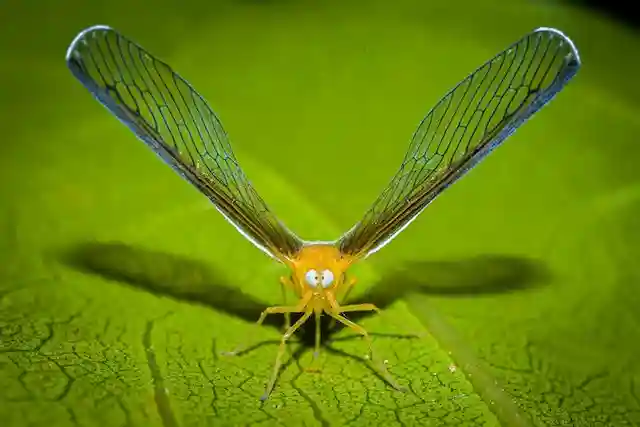
Lesser Known Facts About Mayflies
- Mayfly Lifecycle: Mayflies undergo an incomplete metamorphosis, consisting of egg, nymph, and adult stages. Their adult life is short-lived.
- Aerial Dance: Adult mayflies perform mesmerizing aerial dances, forming swarms that can number in the millions.
- Importance in Ecosystems: Despite their brief adult life, mayflies play a critical role in aquatic ecosystems as both nymphs and adults serve as vital food sources for various animals.
- Variety of Species: Mayflies belong to the order Ephemeroptera and encompass around 3,000 known species, each adapted to specific environments.
- Synchronized Emergence: Some mayfly species exhibit synchronized emergences, where vast numbers of adults appear simultaneously. This phenomenon is known as “hatching.”
Pigeon Lifespan
Pigeons, specifically the Rock Dove (the species often referred to as “pigeons” in urban environments), typically have an average lifespan of 3 to 5 years in the wild. However, pigeons raised in captivity can live significantly longer, often reaching around 15 years or more.
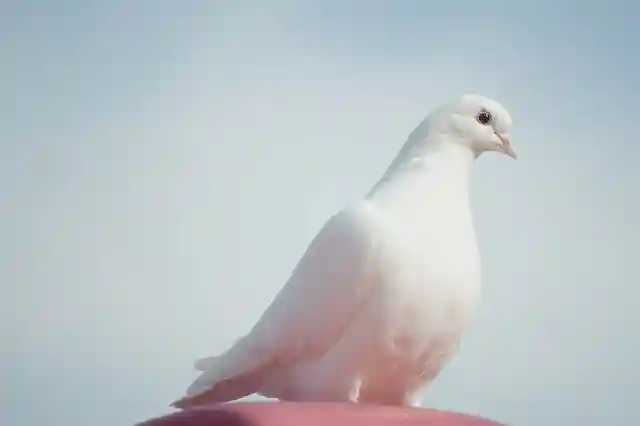
- Average Lifespan: Pigeons generally live between 3 to 5 years in the wild.
- Domestication Impact: Domesticated pigeons tend to have a longer lifespan than their wild counterparts, often living up to 10 to 15 years.
- Factors Affecting Lifespan: Lifespan can vary due to factors such as availability of food, predation, environmental conditions, and disease.
- Urban vs. Rural: Pigeons in urban areas may have shorter lifespans due to increased exposure to pollution, predators, and limited resources.
- Predation: Pigeons are prey to various predators, including birds of prey, domestic pets, and humans, which can significantly impact their lifespan.
- Disease and Health: Pigeons can be susceptible to diseases like avian pox and paramyxovirus, which can reduce their lifespan.
- Nutrition: Adequate food availability and nutrition play a role in the overall health and lifespan of pigeons.
- Human Interaction: Pigeons that interact with humans, especially in cities, might have access to food and shelter, impacting their lifespan positively or negatively.
- Breeding and Reproduction: Pigeons can start breeding at a young age, and the stresses of reproduction might affect their overall lifespan.
- Migration: Some pigeon species are migratory and travel long distances, which can expose them to additional challenges that might impact their lifespan.
- Record Longevity: In some cases, domesticated pigeons have been reported to live up to 30 years, although this is quite rare.
Conclusion
With their astonishing diversity and captivating behaviors, birds continue to capture our imagination. The question “How long do birds live?” has led us through various avian lifespans and the intricate factors that influence them. As we strive to understand and protect these remarkable creatures, let’s ensure that our actions contribute positively to the longevity of our feathered friends.
Frequently Asked Questions (FAQs)
Can pet birds live longer than wild birds?
Yes, some pet birds, such as parrots, can outlive their wild counterparts due to controlled diets, medical care, and reduced predation risks.
Do larger birds always live longer?
While larger birds tend to have longer lifespans, exceptions exist due to other factors like predation and habitat availability.
What’s the shortest lifespan of any bird?
The common mayfly has the shortest lifespan among birds, living for only a few hours.
How can we help prolong birds’ lifespans?
Providing bird-friendly habitats, offering clean water, and minimizing threats like window collisions can contribute to longer bird lifespans.
Do environmental changes affect bird lifespans?
Yes, factors like deforestation and climate change can impact bird habitats and, subsequently, their lifespans.
Are there any exceptions to the general trends in bird lifespans?
Yes, some birds have surprisingly long or short lifespans compared to others in their size category due to unique adaptations and circumstances.




